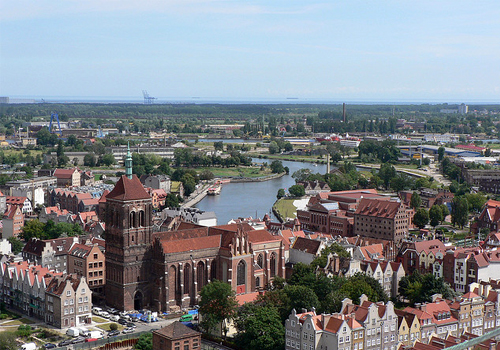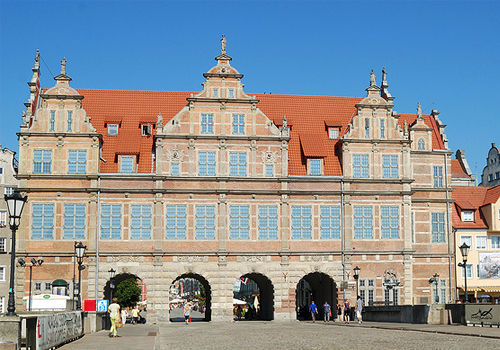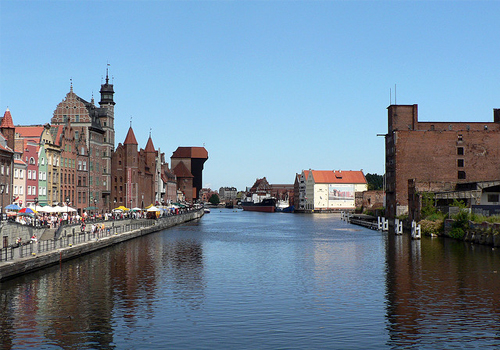Gdansk Travel Guide
Westerplatte
Address: Gdansk
Westerplatte, situated at the entrance to the harbour and just a few kilometres from the city of Gdañsk, is where World War II broke out on 1 September 1939. The small Polish garrison heroically held out against the attack for seven days before surrendering to the German forces, and the site is now a memorial to the defenders.<br /><br /> The Germans suffered unexpectedly high losses, especially considering that there were only 180 Polish defenders, who fought knowing that they had no chance of reinforcement or resupply; after seven days they were forced to surrender due to lack of supplies, but the invading forces allowed the surrendering Major to keep his sword in recognition of his bravery. Sights at Westerplatte include a towering memorial, a small museum (often only open in summer), and the ruins of the barracks and guardhouses left from the shelling, which stand dilapidated and rather spooky.<br /><br /> There is a permanent outdoor exhibition detailing the history of the Westerplatte peninsula, which was a popular health resort before the outbreak of the First World War. The military remnants are situated in a picturesque area and the peninsula can be reached by bus, although the scenery is best appreciated on a boat trip or a bike tour.<br /><br />
Malbork Castle
Address: Starościńska 1, 82-200 Malbork, Poland. Gdansk
Admission: 9am to 7pm, Monday to Sunday.
Telephone: +48 55 647 08 00
Malbork Castle is a classic example of a medieval fortress: it is the world's largest brick castle and one of the most impressive in Europe. Invited by the Polish Royalty to help suppress the pagan tribes in the area, the Teutonic Knights built the castle in 1276 and slowly began to establish themselves as fearsome rulers, taking control of most of Poland until, after several attempts to rid the country of the Knights, they were defeated at the Battle of Grunwald in 1410.<br /><br /> The medieval belief that the bigger the fortress, the more powerful those within is clearly illustrated by this immense brick stronghold, incorporating a system of multiple defence walls with gates and towers. The interior includes arcaded courtyards, chapels, a treasury, the Knights' Hall and an armoury. The castle houses several exhibitions, including displays on the stronghold's history, and collections of tapestries, coins and medals, medieval sculptures and weapons. During summer the courtyard is used as a venue for sound and light shows.<br /><br /> Guided tours are available and there are audio guides for those who prefer to explore independently, although the number of audio guides is limited.<br /><br />
Sopot
Address: Gdansk
Although the idea of a beach holiday in Poland might seem about as plausible as a ski trip in the Netherlands, the wonderful town of Sopot is sure to confound these preconceptions. Although still very much a well-kept secret on the mainstream tourist scene, northern European travellers have been flocking to Sopot for many years to experience its gorgeous sandy beaches on the shore of the Baltic Sea.<br /><br /> Primarily a beach resort and health spa town, Sopot buzzes every summer with the throng of relaxed, happy visitors on its famous wooden pier (the longest in Europe), enjoying the long sunny days and the numerous restaurants, bars and shops on offer. There are a few other tourist attractions in the town, like a museum and a water park, but the beachfront is the unchallenged highlight. Sopot's relative obscurity means that it is a far cheaper option than other more established European beach holiday destinations, making it the perfect place for budget travellers and backpackers.<br /><br /> Sopot boasts a vibrant nightlife, and even hosts the annual Sopot International Song Contest, one of the biggest of its kind in Europe.<br /><br />
St Dominics Fair
Where: Glowne Miasto (Main Town),Gdansk
When: 28 July to 19 August 2018
Poland's largest open-air cultural event is also one of the oldest in the world, beginning in 1260. St Dominic's Fair is the largest trade and cultural outdoor event in Europe and despite its great size, retains its charming medieval flavour. In the 21st century the annual fair draws about 150,000 visitors per day over three weeks in the peak tourist season, with more than 1,000 merchants, artists, and collectors setting up stalls and doing a busy trade in the picturesque streets of the Old Town.<br /><br /> The fair boasts a huge variety of events in historic Gdansk. The programme includes a brass band festival, live music concerts, street theatre performances, special exhibitions at the galleries and museums of Gdansk, children's entertainment, chamber music, sports events, chivalry tournaments, parades and regattas, fireworks, and many games and contests. The fair takes place during the peak tourist season in Poland (the hottest summer months) and it is a wonderful time to visit Gdansk as everything is at its best. However, tourists should ensure that they book accommodation far in advance as the city is packed over this period; those who dislike crowds should avoid travelling during July and August.<br /><br />
(Data provided outside US and Canada by Foreca, Data provided for US and Canada by WDT)
| Jan | Feb | Mar | Apr | May | Jun | Jul | Aug | Sep | Oct | Nov | Dec | |
| Average High | -- | -- | 4° | 9° | 15° | 18° | 20° | 20° | 16° | 11° | 5° | 1° |
| Average Low | -4° | -4° | -1° | 1° | 6° | 9° | 11° | 11° | 8° | 4° | -- | -2° |
(Data provided outside US and Canada by Foreca, Data provided for US and Canada by WDT)
| Jan | Feb | Mar | Apr | May | Jun | Jul | Aug | Sep | Oct | Nov | Dec | |
| Average High | 33° | 33° | 40° | 49° | 60° | 66° | 69° | 69° | 61° | 52° | 41° | 35° |
| Average Low | 24° | 24° | 29° | 35° | 43° | 49° | 53° | 53° | 47° | 40° | 33° | 28° |
| Description Round pins. |
Voltage 230 V |
Frequency 50 Hz |
Type C |
| Description Round pins, grounding pin and receptacle. |
Voltage 230 V |
Frequency 50 Hz |
Type E |


